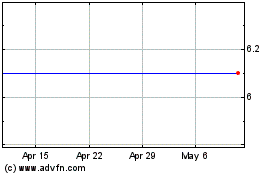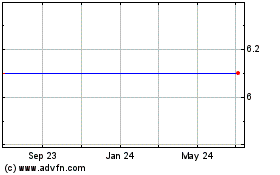Lending Suffers At Spain's Banks
November 13 2015 - 3:02AM
Dow Jones News
(FROM THE WALL STREET JOURNAL 11/13/15)
By Jeannette Neumann
MADRID -- Spain's economy is expanding but its banks' balance
sheets aren't.
Spain is expected to grow more than 3% this year, faster than
the U.S., Germany and most other advanced economies.
But the amount of loans on Spanish banks' balance sheets has
remained flat or fallen during the past year, driving down a key
measure of profitability and heightening investors' concerns about
lenders' ability to generate income next year.
It wasn't supposed to be like this.
"At the beginning of the year, we expected that we were going to
have loan growth this year," Jose Antonio Alvarez, chief executive
of Banco Santander SA, told reporters on Oct. 29. "We expected more
intense demand for credit. The economy is growing well, very
well."
In hindsight, executives at Santander and other Spanish banks,
as well as some analysts and investors, say they underestimated the
depth of the recession from which Spain is emerging and a
consequence known as deleveraging.
Some individuals and businesses in Spain are in fact borrowing
millions of euros in new loans each quarter from banks, but others
are paying off their existing debts at a faster pace. That
deleveraging causes the total volume of loans on Spanish banks'
balance sheets to drop.
Santander, the eurozone's largest lender by market share, had
roughly the same amount of outstanding loans in Spain in the third
quarter of this year as a year ago. Bankia SA, the country's
biggest bailed-out bank, saw a decline. And if it weren't for their
purchases of smaller Spanish banks, loan volumes at Banco Bilbao
Vizcaya Argentaria SA's Spain unit and Caixabank SA would have
fallen year on year, too. Even with the bank buying, each of those
lenders saw a decline in loans in the third quarter compared with
the second.
Spanish borrowers have a lot of debt to work through. A
borrowing binge that helped finance a building frenzy came to a
halt in 2008 and plunged the country into recession through
mid-2013. The debt held by Spanish businesses and households is
expected to be more than double the country's economic output until
at least 2020, the International Monetary Fund said.
Bankers said last year they expected Spain's
better-than-anticipated economic growth to ease the country's
existing debt burden and encourage new investment and borrowing,
expanding banks' loan books during 2015.
The drivers of Spain's economic expansion, however, throw light
on why that hasn't happened.
While Spain's 3.1% anticipated growth rate this year is notable,
the country is still playing catch-up after years of contraction,
said Juan Ignacio Sanz, a professor at Spain's Esade business
school. Spain's total output in euros is expected to exceed
precrisis levels only in 2017, according to the IMF.
Although Spain's 21% unemployment rate remains among Europe's
highest, it is decreasing. But many of those who do have jobs have
seen their salaries slashed as Spanish companies cut costs to pay
down debts or make their exports more competitive.
Such borrowers are focused on paying off the debts they have,
not borrowing more, even at super low interest rates.
Some Spaniards now shun taking on any more debt "because they
have the memory of how bad it was during the crisis," said Juan
Jose Toribio, an economics professor at IESE business school in
Madrid. "That had a more important impact than we thought."
(END) Dow Jones Newswires
November 13, 2015 02:47 ET (07:47 GMT)
Copyright (c) 2015 Dow Jones & Company, Inc.
Banco Santander (NYSE:STD)
Historical Stock Chart
From Mar 2024 to Apr 2024

Banco Santander (NYSE:STD)
Historical Stock Chart
From Apr 2023 to Apr 2024
